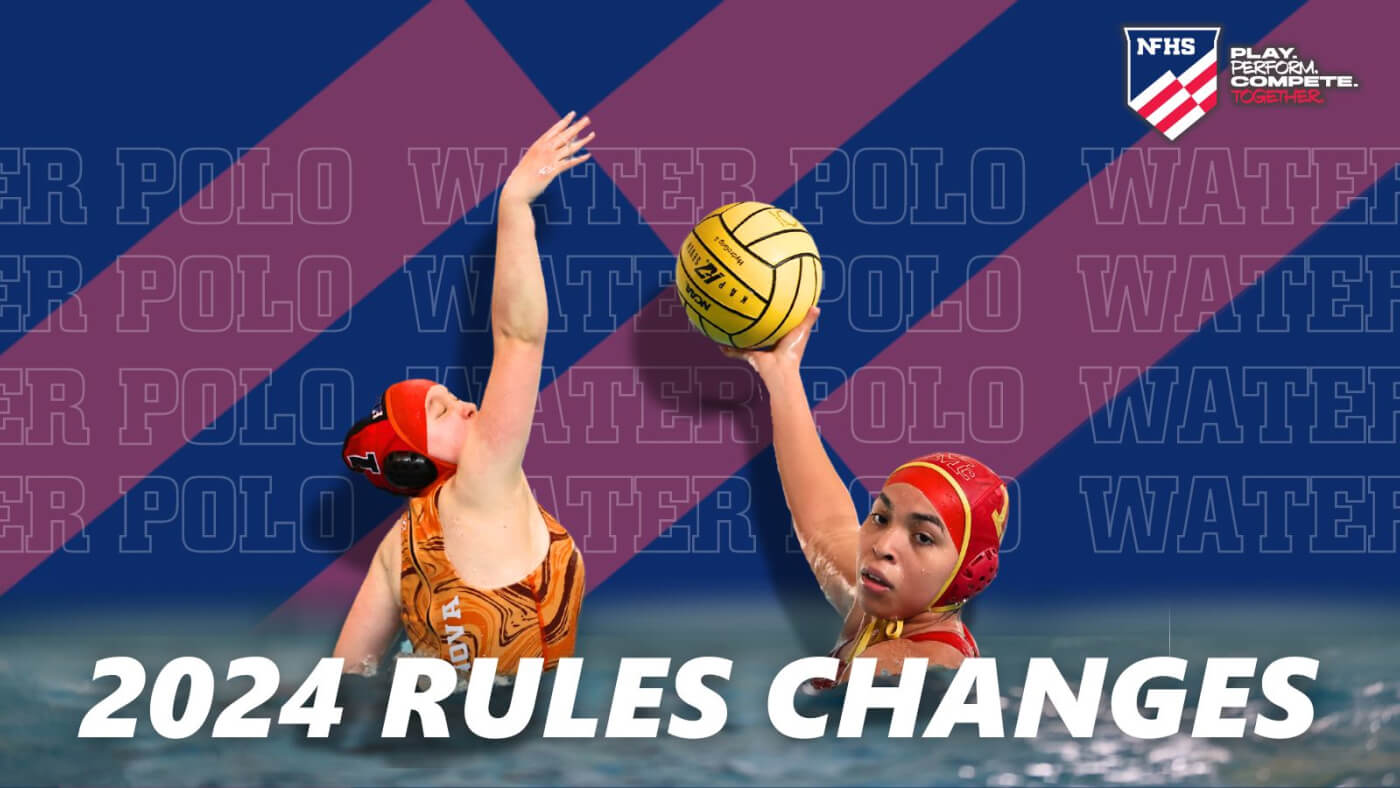
New Goal Area Created and Defined in High School Water Polo Rules

- Rule 2-1-2 further defines an illegal player.
- Rule 3-17-2a adds language that brings the rule in line with Rule 3-18 and defines when a game timer shall start the game clock.
- Rule 4-22 adds language so that teams entitled to direct shots will not be affected by errors in which they aren’t involved in or an official’s choice in timing to correct a uniform issue.
- Rule 5-11 now states that players with a position of advantage do not have to give up the advantage to go to the ball and take the free throw. The player on the team who is next closest to the ball must take the free throw as long as there is no undue delay.
# # #
About the National Federation of State High School Associations (NFHS)
The NFHS, based in Indianapolis, Indiana, is the national leadership organization for high school sports and performing arts activities. Since 1920, the NFHS has led the development of education-based interscholastic sports and performing arts activities that help students succeed in their lives. The NFHS sets direction for the future by building awareness and support, improving the participation experience, establishing consistent standards and rules for competition, and helping those who oversee high school sports and activities. The NFHS writes playing rules for 17 sports for boys and girls at the high school level. Through its 50 member state associations and the District of Columbia, the NFHS reaches more than 19,800 high schools and 12 million participants in high school activity programs, including more than 8 million in high school sports. As the recognized national authority on interscholastic activity programs, the NFHS conducts national meetings; sanctions interstate events; offers online publications and services for high school coaches and officials; sponsors professional organizations for high school coaches, officials, speech and debate coaches, and music adjudicators; serves as the national source for interscholastic coach training; and serves as a national information resource of interscholastic athletics and activities. For more information, visit the NFHS website at www.nfhs.org.









